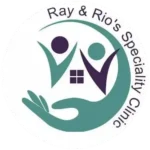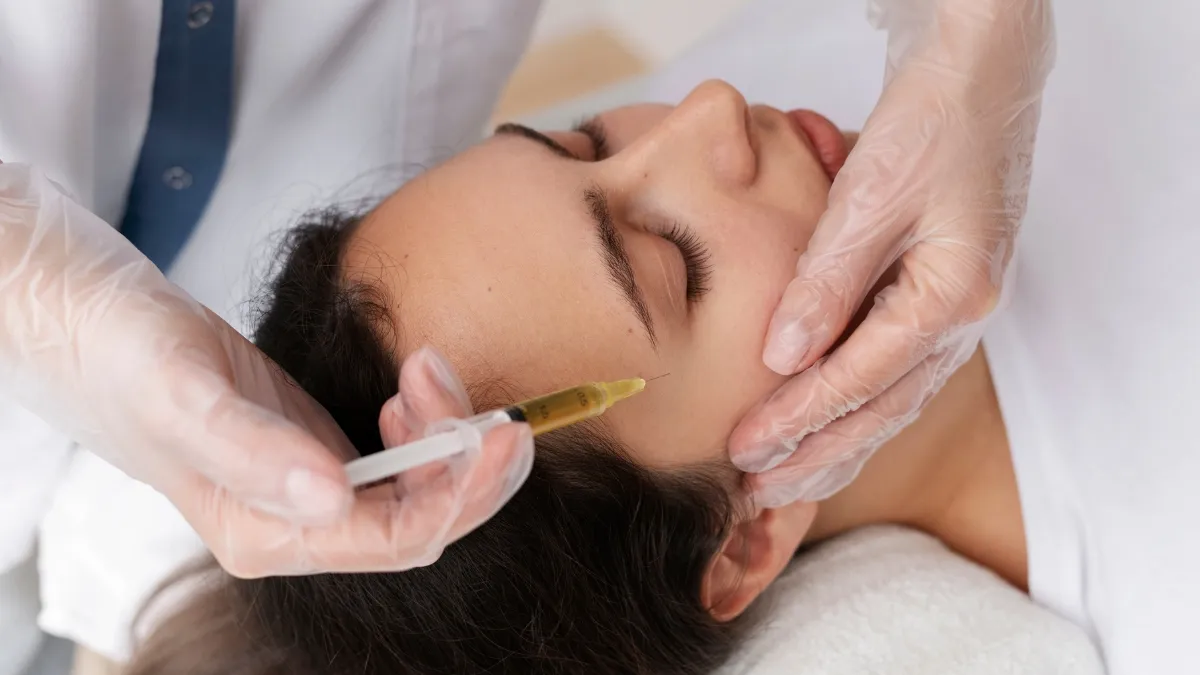Platelet-rich plasma (PRP) therapy is a regenerative treatment that utilizes the healing properties of platelets found in a patient’s own blood. PRP has gained popularity in both the medical and cosmetic fields for its potential to stimulate tissue repair, promote healing, and rejuvenate the skin and hair.
What is PRP and how is it done?
PRP is a concentration of platelets obtained from the patient’s blood through a simple and minimally invasive procedure. The process involves the following steps:
- Blood Collection: A small amount of blood, usually around 10-20 ml, is drawn from the patient’s arm.
- Centrifugation: The collected blood is then placed in a centrifuge, a device that spins at a high speed to separate its components based on density.
- Platelet Separation: The centrifugation process separates the platelets from other blood components, resulting in a concentrated platelet-rich plasma.
- Activation: The separated platelets are then activated to release growth factors and other bioactive substances that aid in tissue regeneration and healing.
- Injection or Application: The PRP is injected or applied to the targeted area, such as the skin or scalp, depending on the purpose of the treatment.
What are the Benefits of PRP in Skin?
This magic Elixir, when introduced into the Dermal Space of our Skin, it triggers the skin, nourishes it and restarts what we long for our skin to do by itself.
- Improved Skin Texture and Tone: PRP stimulates collagen and elastin production, leading to smoother, firmer, and more youthful-looking skin.
- Reduced Fine Lines and Wrinkles: The growth factors present in PRP help minimise the appearance of fine lines and wrinkles, promoting a more youthful complexion.
- Enhanced Skin Radiance: PRP promotes cell regeneration and rejuvenation, resulting in a brighter and more radiant skin tone.
- Scar Reduction: PRP can improve the appearance of acne scars, surgical scars, and other types of scars by stimulating tissue repair and remodelling.
What are the Benefits of PRP in Hair Loss?
PRP is used as an armamentarium in fighting hair loss and helping rejuvenate the follicles and help hair growth.
- Hair Growth Stimulation: PRP injected into the scalp can stimulate dormant hair follicles, promoting hair growth and reducing hair thinning.
- Hair Thickness and Density: PRP enhances the thickness and density of existing hair, resulting in fuller and healthier-looking locks.
- Slows Down Hair Loss: PRP therapy can help slow down the progression of hair loss in individuals experiencing pattern baldness or other forms of hair thinning.
The quality and effectiveness of PRP can vary based on several factors, including the concentration of platelets, the method of preparation, and the expertise of the medical professional performing the procedure. It’s crucial to choose a reputable clinic like Ray & Rio’s Speciality Clinic, where experienced dermatologists, such as Dr. Annie Flora, perform PRP treatments using advanced techniques and equipment.
Price of PRP treatment in Chennai
The price of PRP (Platelet-Rich Plasma) treatment in Chennai can vary based on clinic expertise, equipment quality, and preparation methods. Achieving the best results with PRP therapy requires advanced equipment, precise protocols, and skilled harvesting and injection techniques. While some clinics may offer cheaper PRP treatments, these can often compromise on platelet concentration or preparation quality, leading to suboptimal outcomes. Prioritizing quality and safety is essential when considering PRP therapy, as lower-cost treatments may not provide the desired regenerative benefits or lasting results. It’s crucial to choose a clinic with a reputation for high standards and experienced practitioners, ensuring effective and safe PRP treatment tailored to your specific needs. Avoid settling for reduced quality in exchange for a lower price.
Tests to do before a PRP
Before undergoing Platelet-Rich Plasma (PRP) therapy, several evaluations and tests may be necessary to ensure the treatment’s suitability and safety. A detailed medical history assessment is conducted to identify any underlying conditions or medications that could affect the outcome or increase risks. Blood tests are essential to check for anemia, infections, and platelet counts, as PRP relies on the body’s platelets to stimulate healing and regeneration. These tests help confirm that the patient has an adequate level of platelets for an effective treatment. Additionally, a thorough examination by a qualified dermatologist is performed to evaluate the targeted area, skin health, and suitability for PRP. These pre-treatment steps help tailor the procedure to the individual, maximizing safety and efficacy.
How many Sessions of PRP will be needed?
The number of Platelet-Rich Plasma (PRP) sessions required varies based on the condition being treated, the patient’s response, and the desired outcome. For most cases, such as hair restoration or joint pain relief, a series of 3 to 5 sessions is commonly recommended. These sessions are typically spaced about 4 to 6 weeks apart to allow the PRP to stimulate healing and promote cell regeneration effectively. Some patients may notice improvements after just one session, but optimal results are generally achieved with multiple treatments. The healthcare provider will assess progress after each session to determine if additional treatments are necessary, ensuring a personalized plan that aligns with the patient’s specific condition and goals for long-term success.
Who cannot take PRP Treatment?
PRP (Platelet-Rich Plasma) treatment may not be suitable for everyone, particularly individuals with specific health conditions. Those with blood disorders, such as clotting or bleeding abnormalities, are generally advised against PRP therapy, as the procedure relies on healthy blood platelets to stimulate healing and regeneration. Additionally, individuals with active infections, particularly in the area where PRP would be injected, should avoid the treatment to prevent complications or the spread of infection. Other conditions like autoimmune diseases, cancer, or chronic skin diseases may also affect candidacy. A comprehensive consultation with a qualified dermatologist or specialist is crucial to assess medical history, evaluate any contraindications, and determine the safest and most effective treatment options for each individual.
PRP at Ray & Rio’s Speciality Clinic in Chennai
Ray & Rio’s Speciality Clinic in Chennai is a leader in PRP (Platelet-Rich Plasma) therapy, known for its advanced treatments and exceptional patient care. Dr. Annie Flora, a highly skilled dermatologist, and her dedicated team provide personalized PRP treatments designed to meet each patient’s unique requirements. Using state-of-the-art facilities and the latest technology, the clinic ensures that patients receive top-quality care with a focus on achieving outstanding results. PRP therapy at Ray & Rio’s is ideal for addressing hair loss, skin rejuvenation, and tissue healing, offering a safe and minimally invasive solution. With a reputation built on successful outcomes and patient satisfaction, Ray & Rio’s Speciality Clinic has become a trusted destination for PRP therapy in Chennai.
PRP therapy is a versatile and effective treatment option for skin rejuvenation and hair restoration. With its ability to harness the body’s natural healing processes, PRP offers numerous benefits for improving skin quality and promoting hair growth. However, it is important to choose a reputable clinic and consult with a qualified dermatologist to ensure the best possible results.

